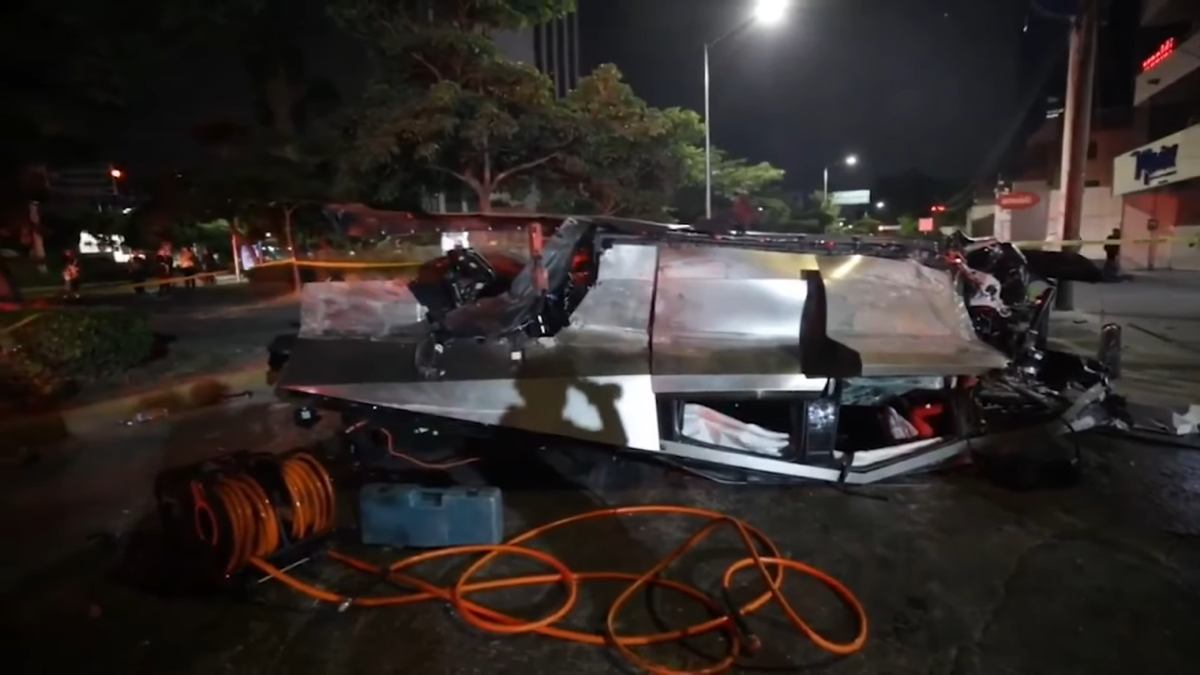
Tesla Cybertruck’s “Tough as Nails” Claim Tested After Serious Crash in Mexico
The Tesla Cybertruck is back in the spotlight following two serious accidents in Mexico, each highlighting the vehicle’s strength – and its controversial design. On November 2nd, a Cybertruck crash in Guadalajara made headlines after the vehicle collided with a statue, leading to significant injuries. The accident resulted in one woman being ejected from the vehicle, leaving her hospitalized in critical condition, while three other passengers survived with only minor injuries. This crash has since sparked extensive discussion around the Cybertruck’s unconventional design and its impact on safety.
Photos from the crash reveal the aftermath, with the Cybertruck nearly unrecognizable from the extensive front-end damage and exposed internal components. The images even show the vehicle flipped onto its roof, with three of its wheels completely detached – an outcome that suggests a high-impact collision. Shortly after, Elon Musk took to social media to claim that the accident underscored the truck’s toughness, famously calling it “tougher than a bag of nails.” Musk’s remarks, however, sparked debate among automotive safety experts and the public alike, raising questions about whether the truck’s rigid structure may actually compromise safety.
Also Read:- Russell Westbrook Shines, Leading Nuggets to Victory Over Undefeated Thunder
- "China's Silent Concerns on Trump's Re-Election: Unofficial Worries Amid Official Neutrality"
The Cybertruck’s unique build and sharp design set it apart from other electric vehicles, but it’s also what makes it controversial in the automotive world. While most vehicles are designed with crumple zones to absorb crash impacts, the Cybertruck’s design emphasizes structural rigidity, prioritizing protection for passengers but potentially at a cost to pedestrians and external objects. This focus on strength has left some experts concerned about its safety implications, especially since traditional crash tests that assess the safety of new models, such as those by the National Highway Traffic Safety Administration (NHTSA), haven’t yet been conducted on the Cybertruck. Due to limited resources, the NHTSA hasn’t scheduled a crash test for the Cybertruck, and the vehicle is currently ineligible for European safety tests.
Interestingly, the Guadalajara incident wasn’t an isolated case – just a day earlier, another Cybertruck was totaled in a separate crash in Mexico City, where it collided with a gate. Although the specifics are unknown, it involved another high-impact scenario that underscored the potential challenges of handling such a powerful and unconventional vehicle. These back-to-back accidents, among the first since the truck’s release, have raised questions about the Cybertruck’s real-world durability and handling.
For Tesla, these incidents may serve as an opportunity to gather data to better understand the Cybertruck’s performance under extreme conditions. While the brand markets the truck as rugged and resilient, the recent accidents may prompt further consideration of how its design impacts both driver safety and public perception.
Read More:


0 Comments